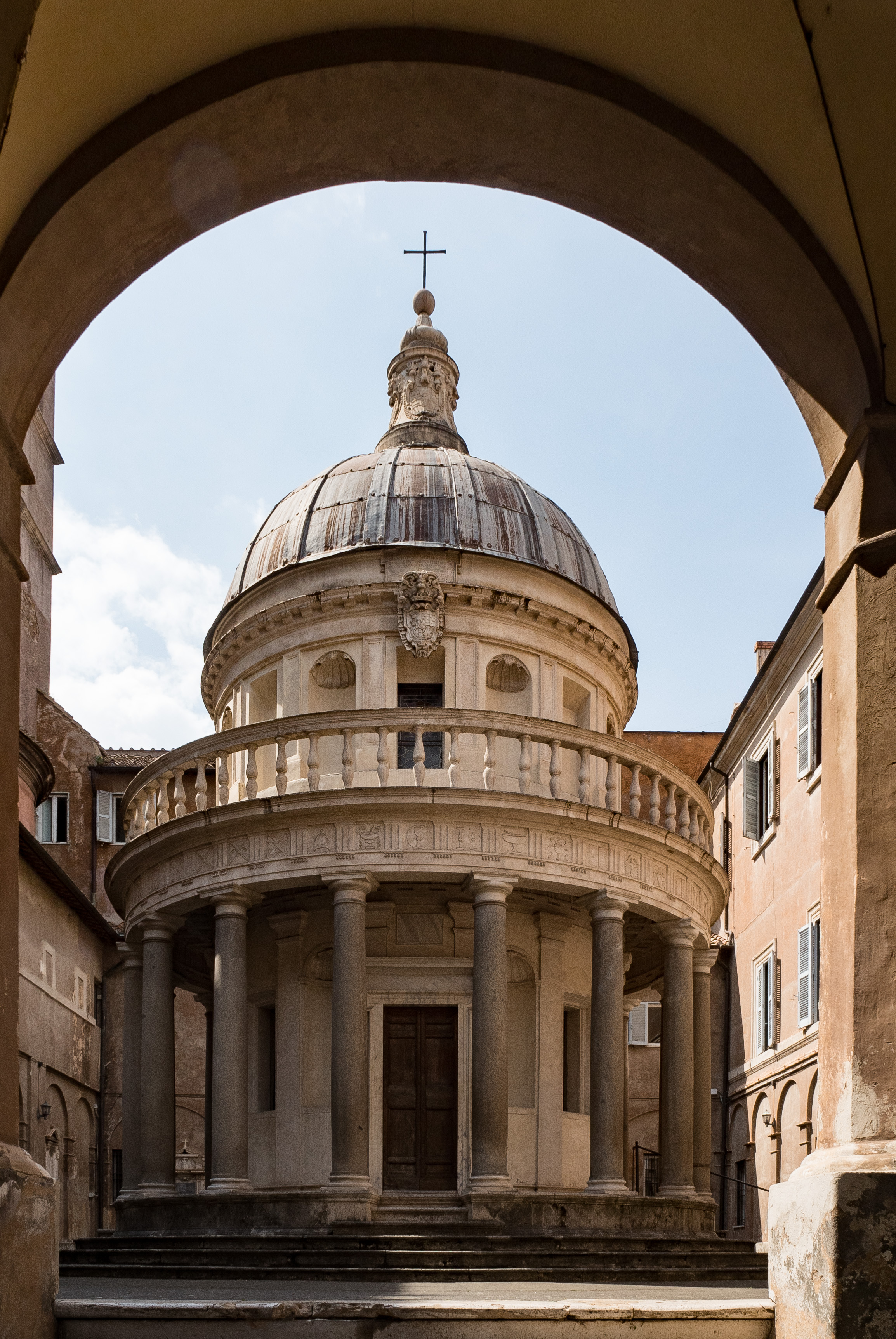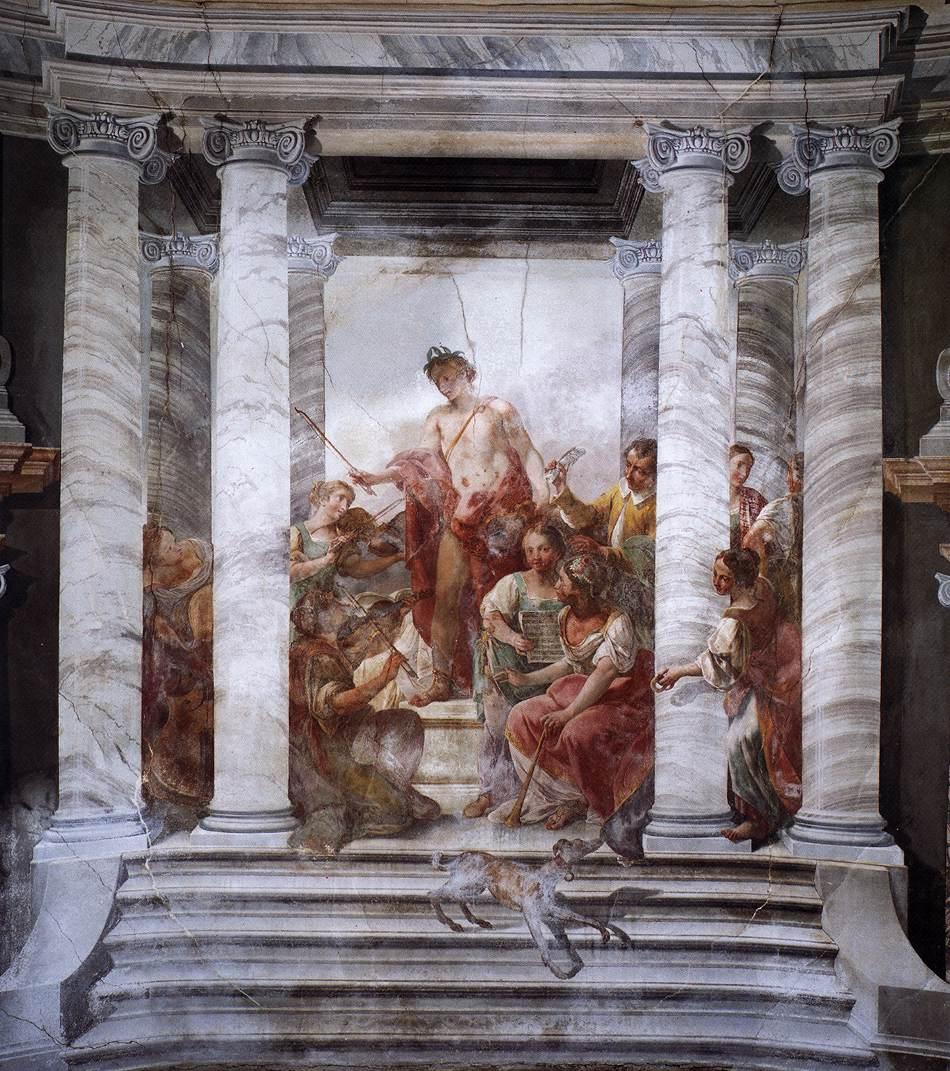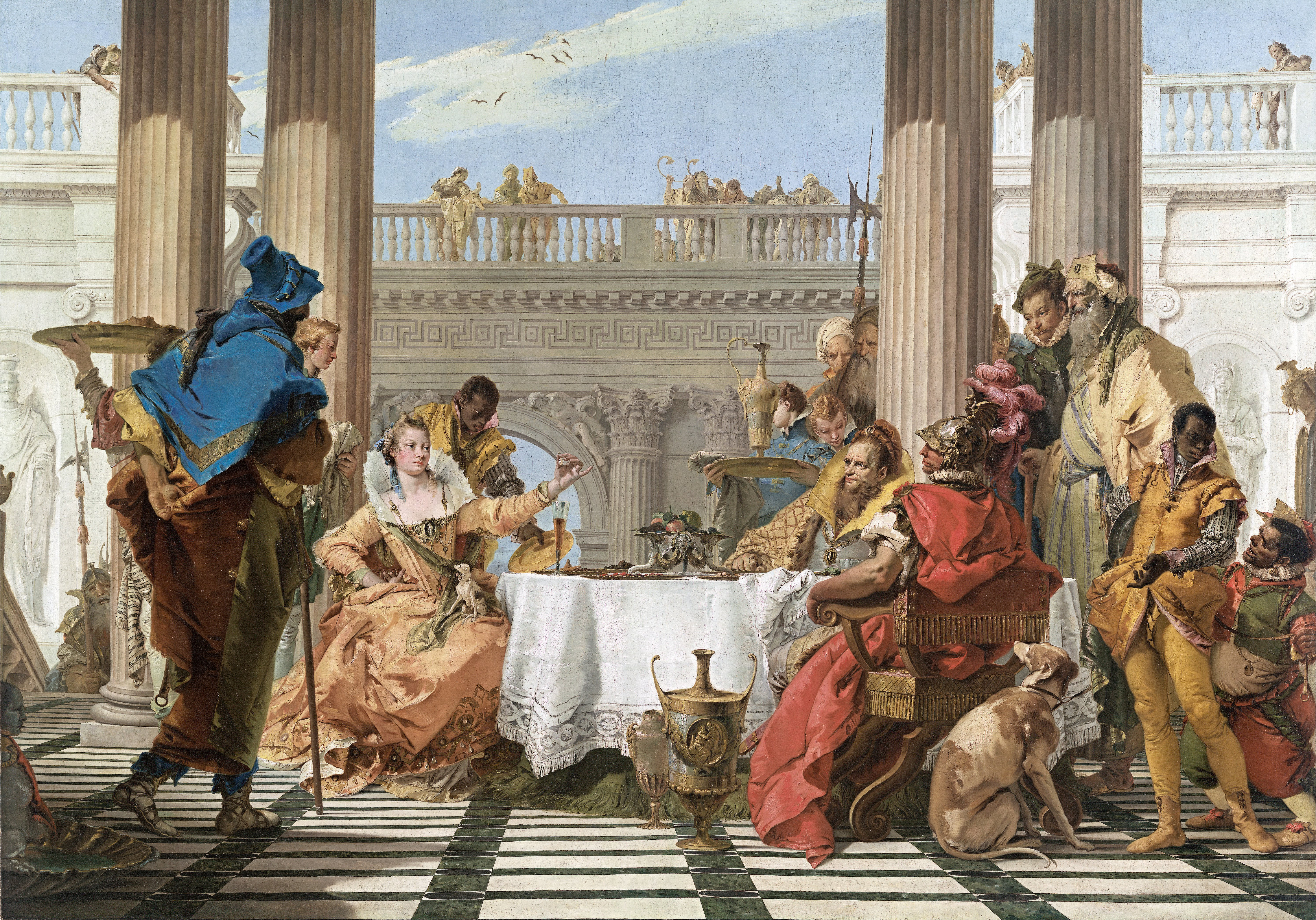|
Palazzo Tiepolo
The Palazzo Tiepolo is a Renaissance-style palace located between the Palazzo Soranzo Pisani and the Palazzo Pisani Moretta on the Grand Canal, in the Sestieri of San Polo, Venice, Italy. History The palace was commissioned in the second half of the 16th century at the site of an older palace by the aristocratic Tiepolo family. The facade was once frescoed by Andrea Schiavone; traces remain. The entry was frescoed by Jacopo Guarana and the interiors are decorated with polychrome stucco. Before World War I German writer Franz Joseph von Bülow lived in Palazzo Tiepolo. Bibliography * References Tiepolo Tiepolo Giovanni Battista Tiepolo ( , ; March 5, 1696 – March 27, 1770), also known as Giambattista (or Gianbattista) Tiepolo, was an Italian painter and printmaker from the Republic of Venice who painted in the Rococo style, considered an import ... Renaissance architecture in Venice Houses completed in the 16th century Tiepolo family {{Italy-palace- ... [...More Info...] [...Related Items...] OR: [Wikipedia] [Google] [Baidu] |
Renaissance Architecture
Renaissance architecture is the European architecture of the period between the early 15th and early 16th centuries in different regions, demonstrating a conscious revival and development of certain elements of Ancient Greece, ancient Greek and Ancient Rome, Roman thought and material culture. Stylistically, Renaissance architecture followed Gothic architecture and was succeeded by Baroque architecture. Developed first in Florence, with Filippo Brunelleschi as one of its innovators, the Renaissance style quickly spread to other Italian cities. The style was carried to Spain, France, Germany, England, Russia and other parts of Europe at different dates and with varying degrees of impact. Renaissance style places emphasis on symmetry, proportion (architecture), proportion, geometry and the regularity of parts, as demonstrated in the architecture of classical antiquity and in particular ancient Roman architecture, of which many examples remained. Orderly arrangements of columns, pi ... [...More Info...] [...Related Items...] OR: [Wikipedia] [Google] [Baidu] |
Jacopo Guarana
225px, ''Allegory of the virtues Mocenigo'', 1787 Jacopo Guarana (October 28, 1720 – April 18, 1808) was a Venetian painter of the late Baroque period who was born in Verona. He was active mainly in Venice and its mainland territories. In 1750 he completed frescoes for the interior of Ca' Rezzonico and, in 1780, for the church of San Tomà. He also painted for the church of San Teonisto in Treviso and the Villa Contarini in Cinto Euganeo and helped decorate the Villa Pisani at Stra. Other works were completed for the Palazzo Balbi, Palazzo Boldù a San Felice, Palazzo Erizzo a San Martino, Palazzo Michiel del Brusà, and Palazzo Mocenigo a San Stae. Guarana is the last remaining direct heir of the Tiepolesque tradition. He was a founding member of the Venetian Accademia di Belle Arti and is said to have studied under Sebastiano Ricci, then with Giovanni Battista Tiepolo. Among his most popular works are the wall frescoes at the concert hall of the Ospedaletto, Veni ... [...More Info...] [...Related Items...] OR: [Wikipedia] [Google] [Baidu] |
Renaissance Architecture In Venice
The Renaissance ( , ) , from , with the same meanings. is a period in European history marking the transition from the Middle Ages to modernity and covering the 15th and 16th centuries, characterized by an effort to revive and surpass ideas and achievements of classical antiquity. It occurred after the Crisis of the Late Middle Ages and was associated with great social change. In addition to the standard periodization, proponents of a "long Renaissance" may put its beginning in the 14th century and its end in the 17th century. The traditional view focuses more on the early modern aspects of the Renaissance and argues that it was a break from the past, but many historians today focus more on its medieval aspects and argue that it was an extension of the Middle Ages. However, the beginnings of the period – the early Renaissance of the 15th century and the Italian Proto-Renaissance from around 1250 or 1300 – overlap considerably with the Late Middle Ages, conventionally dat ... [...More Info...] [...Related Items...] OR: [Wikipedia] [Google] [Baidu] |
Palaces On The Grand Canal (Venice)
A palace is a grand residence, especially a royal residence, or the home of a head of state or some other high-ranking dignitary, such as a bishop or archbishop. The word is derived from the Latin name palātium, for Palatine Hill in Rome which housed the Imperial residences. Most European languages have a version of the term (''palais'', ''palazzo'', ''palacio'', etc.), and many use it for a wider range of buildings than English. In many parts of Europe, the equivalent term is also applied to large private houses in cities, especially of the aristocracy; often the term for a large country house is different. Many historic palaces are now put to other uses such as parliaments, museums, hotels, or office buildings. The word is also sometimes used to describe a lavishly ornate building used for public entertainment or exhibitions such as a movie palace. A palace is distinguished from a castle while the latter clearly is fortified or has the style of a fortification, whereas a pa ... [...More Info...] [...Related Items...] OR: [Wikipedia] [Google] [Baidu] |
Palaces In Sestiere San Polo
A palace is a grand residence, especially a royal residence, or the home of a head of state or some other high-ranking dignitary, such as a bishop or archbishop. The word is derived from the Latin name palātium, for Palatine Hill in Rome which housed the Imperial residences. Most European languages have a version of the term (''palais'', ''palazzo'', ''palacio'', etc.), and many use it for a wider range of buildings than English. In many parts of Europe, the equivalent term is also applied to large private houses in cities, especially of the aristocracy; often the term for a large country house is different. Many historic palaces are now put to other uses such as parliaments, museums, hotels, or office buildings. The word is also sometimes used to describe a lavishly ornate building used for public entertainment or exhibitions such as a movie palace. A palace is distinguished from a castle while the latter clearly is fortified or has the style of a fortification, whereas a pa ... [...More Info...] [...Related Items...] OR: [Wikipedia] [Google] [Baidu] |
Franz Joseph Von Bülow
Franz Vollrath Carl Wilhelm Joseph von Bülow (11 September 1861 – 18 October 1915) was a German author, soldier and homosexual activist. Life Franz Vollrath Carl Wilhelm Joseph von Bülow was born on 11 September 1861 in Frankfurt am Main of Imperial Germany. Bülow's father was Bernhard Vollrath von Bülow, chamberlain of Mecklenburg-Schwerin and envoy to the German Confederation's ''Bundesversammlung'' in Frankfurt am Main, while his mother was Paula, née von Linden. Bülow attended high schools in Schwerin and Waren for his studies. Following that, he completed cadet schools at Plön and Gross-Lichterfelde. Bülow had advanced to the rank of lieutenant by 1890. In the same year, he left the service and joined the South West Africa Company in the German colonial South West Africa. In the years that followed, he authored a book on his experiences in German South West Africa and Cecil Rhodes' politics, as well as the Herero and Namaqua genocide. Bülow was blinded by ... [...More Info...] [...Related Items...] OR: [Wikipedia] [Google] [Baidu] |
World War I
World War I (28 July 1914 11 November 1918), often abbreviated as WWI, was one of the deadliest global conflicts in history. Belligerents included much of Europe, the Russian Empire, the United States, and the Ottoman Empire, with fighting occurring throughout Europe, the Middle East, Africa, the Pacific, and parts of Asia. An estimated 9 million soldiers were killed in combat, plus another 23 million wounded, while 5 million civilians died as a result of military action, hunger, and disease. Millions more died in genocides within the Ottoman Empire and in the 1918 influenza pandemic, which was exacerbated by the movement of combatants during the war. Prior to 1914, the European great powers were divided between the Triple Entente (comprising France, Russia, and Britain) and the Triple Alliance (containing Germany, Austria-Hungary, and Italy). Tensions in the Balkans came to a head on 28 June 1914, following the assassination of Archduke Franz Ferdin ... [...More Info...] [...Related Items...] OR: [Wikipedia] [Google] [Baidu] |
Andrea Schiavone
Andrea Meldolla ( hr, Andrija Medulić), also known as Andrea Schiavone or Andrea Lo Schiavone (c. 1510/15–1563) was an Italian Renaissance painter and etcher, born in present-day Croatia, active mainly in the city of Venice. His style combined Mannerist elements, a relative rarity in Venice, with much influence from the mainstream of Venetian painting, especially Titian. Biography Meldolla was born in the Venetian-ruled city of Zara in Dalmatia, now Zadar in Croatia, the son of a garrison commander of a post nearby. His family was originally from the small town of Meldola, close to the city of Forlì in Romagna. He trained either in Zara or in Venice. Gian Paolo Lomazzo stated, in a book of 1584, that he was a pupil of Parmigianino, but this has been doubted. There are unproven claims that he trained with Bonifazio de Pitati. He worked in fresco, panel painting, and etching (teaching himself to etch by working initially from drawings by Parmigianino). By 1540, he was w ... [...More Info...] [...Related Items...] OR: [Wikipedia] [Google] [Baidu] |
Palazzo Soranzo Pisani
Palazzetto Tiepolo or Palazzo Soranzo Pisani is a 15th century palace in Venice, located in the San Polo district and overlooking the right side of the Grand Canal, between Palazzo Tiepolo and Palazzo Tiepolo Passi. The name Palazzo Soranzo Pisani reflects the noble families Sorenzo and Pisani. Thus, including the present owner the Passi Family and the Tiopolo family, the palace has been in the possession of four noble venetian families. Architecture The building is fully covered with brown plaster. The structure is a mix of Gothic and Renaissance architectural styles and is among the lowest buildings located between the San Polo and San Tomà canals. The ground floor, devoid of the mezzanine, has a water portal of modest dimensions is positioned towards the left side—perhaps once it was paired with another portal now walled up. The first noble floor has a central lancet-shaped pentafora and two pairs of lateral monoforas, all decorated by a serrated frame. The curious ... [...More Info...] [...Related Items...] OR: [Wikipedia] [Google] [Baidu] |
Tiepolo Family
Giovanni Battista Tiepolo ( , ; March 5, 1696 – March 27, 1770), also known as Giambattista (or Gianbattista) Tiepolo, was an Italian painter and printmaker from the Republic of Venice who painted in the Rococo style, considered an important member of the 18th-century Venetian school. He was prolific, and worked not only in Italy, but also in Germany and Spain. Giovan Battista Tiepolo, together with Giambattista Pittoni, Canaletto, Giovan Battista Piazzetta, Giuseppe Maria Crespi, and Francesco Guardi are considered the traditional Old Masters of that period. Successful from the beginning of his career, he has been described by Michael Levey as "the greatest decorative painter of eighteenth-century Europe, as well as its most able craftsman." Biography ''The Glory of St. Dominic'', 1723 Early life (1696–1726) Born in Venice, he was the youngest of six children of Domenico and Orsetta Tiepolo. His father was a small shipping merchant who belonged to a family th ... [...More Info...] [...Related Items...] OR: [Wikipedia] [Google] [Baidu] |





